
Simple Past Tense
Verbs The verb 'be' The verb 'be' Level: beginner The verb be has the following forms: We use the infinitive form be with modal verbs: It will be dark soon. They might be tired. The verb be is a link verb. It is used: with a noun phrase: My mother is a teacher. Bill Clinton was the president of the US. with an adjective: This soup is very tasty.
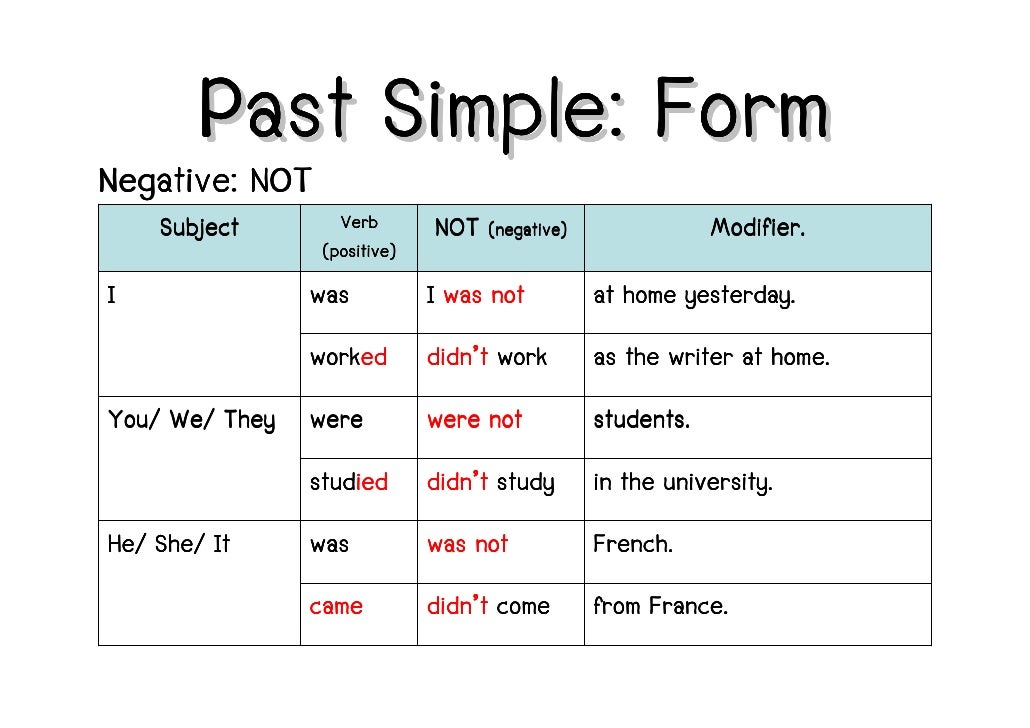
F2F Past Simple
We use the Past Simple tense when: the event is in the past. the event is completely finished. we say (or understand) the time and/or place of the event. In general, if we say the past time or place of the event, we must use the Past Simple tense; we cannot use the present perfect. Here are some more examples:

Simple Past Tense Definition & Useful Examples in English ESL Grammar
English English grammar The verb to be in past simple tense: How to use it, examples, & exercise The verb to be is vital for identifying peoples around you. Learn how to use to be in the past tense; use it whenever you need. Past tense will extend your grammar! Adelaide A. Updated July 3, 2023 6 min read This author is a Preply tutor!
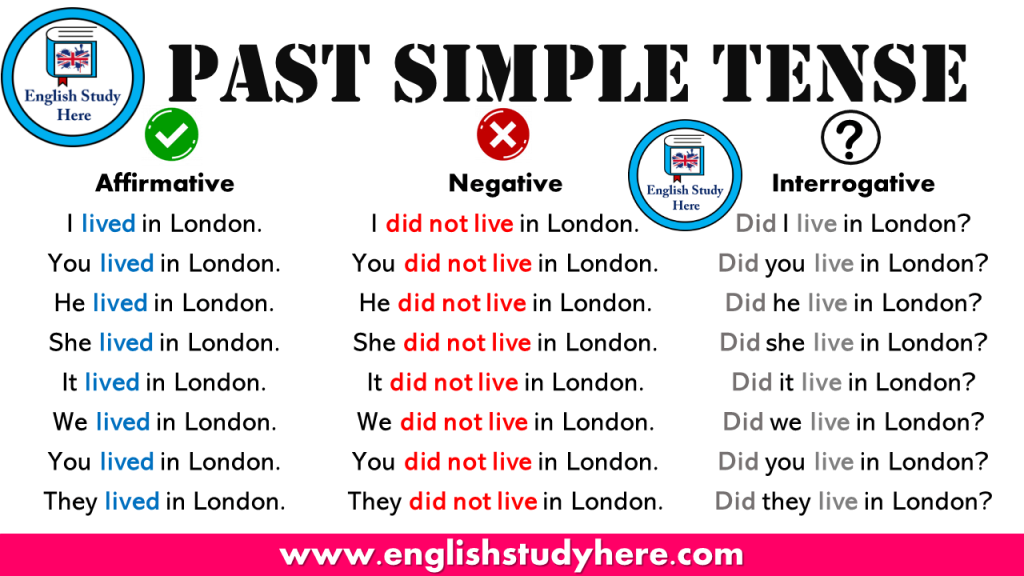
PAST SIMPLE Mind Map
The 'simple past tense', according to the Cambridge Dictionary, is defined as "the form of a verb used to describe an action that happened before the present time and is no longer happening. It is usually made by adding -ed." The Collins Dictionary defines the 'simple past tense' as "a tense used to refer to the past."
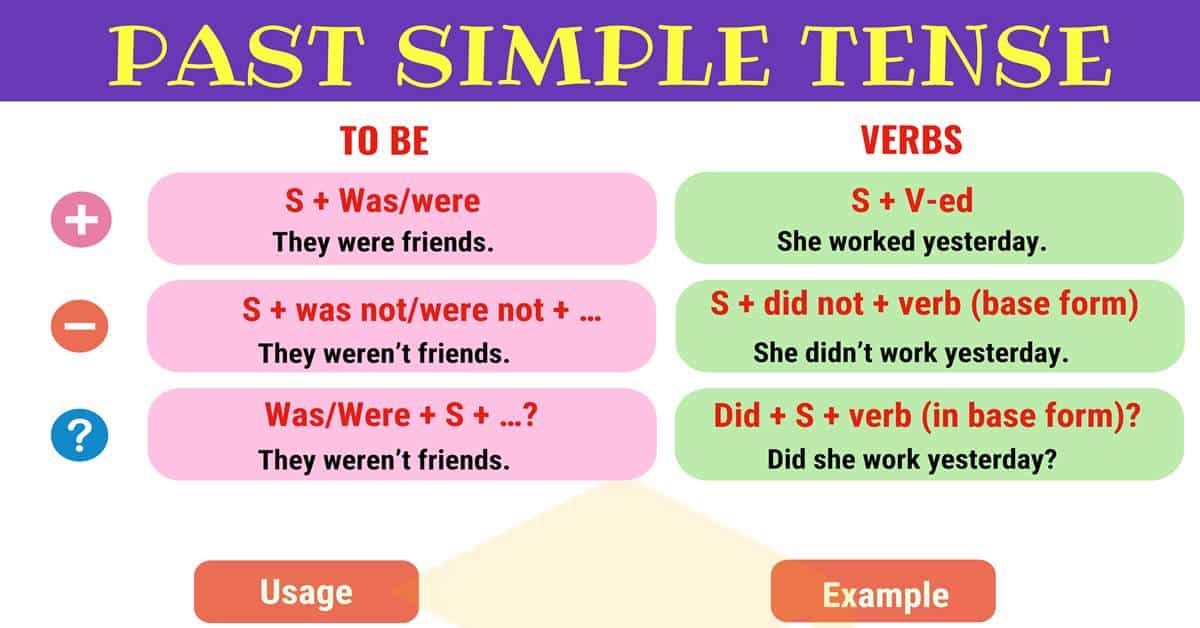
Past Simple Tense (Simple Past) Definition, Rules and Useful Examples
Revised on October 23, 2023. The simple past tense is a verb form used to refer to an action or series of actions that were completed in the past. The simple past tense of regular verbs is formed by adding "-ed" to the infinitive form of the verb (e.g., "cook" becomes "cooked"). Most verbs in the simple past take the same form.

simple past tense worksheet with pictures and words to help students
Coniugazione not be | Coniugazione verbo inglese not be | Coniugatore Reverso be stare; essere;. Infinitive not to be Preterite was not Past participle not been Modello : be Ausiliare : have, be Altre forme: be / be oneself Forme contratte Pubblicità Indicative Present I am not you are not he/she/it is not we are not you are not they are not

The Past Simple with "be" English Study Page
Irregular verbs are called so because they don't fit a particular pattern. This means that you just have to get to know and learn over time how the past tense form is created. There are many of course, but here are some examples: freeze = froze. ran = run. sleep = slept. give - gave. eat = ate. win = won.

Past Simple Tense (Simple Past) Definition, Rules and Useful Examples
How to use the past simple tense. You can use past simple with time expressions that refer to a point of time in the past, for example, "earlier today", "yesterday", "last week", "last month" or "last Tuesday". I married Steve last year. You can also use phrases that refer to an indefinite period of time in the past, often.

Verb use in past simple
The past forms don't change. I took a taxi to the airport. (take → took) That was when we spoke. (speak → spoke) One person gave me his last bar of chocolate. (give → gave) I see what you mean. I made, you made, he made, she made, it made, we made, they made! Exactly!
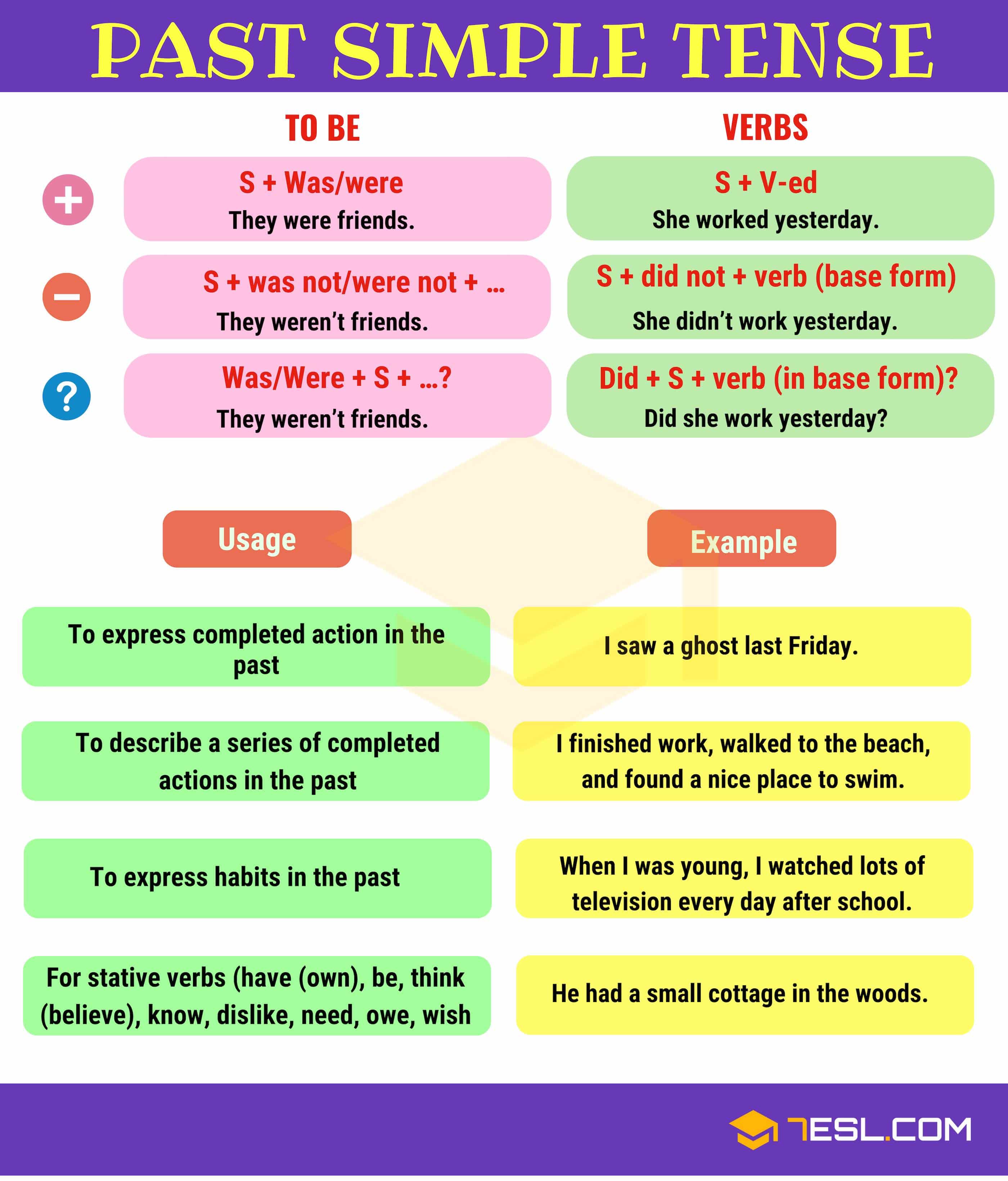
The Past ESL for one and all
The Past Simple Tense Perfect English Grammar The Past Simple Tense (also called the simple past tense) Click here to download this explanation as a pdf. Click here to learn about how to USE the past simple. It's similar to the present simple because it has different rules for the verb 'be', which becomes 'was' or 'were': The Past Simple with 'be'

The Past Simple with "be" English Study Page
be. This page shows the basic tenses with the irregular verb be, including the following structures: affirmative or positive (+) negative (-) interrogative or question (?) The basic structures are: +. positive. subject + auxiliary + main verb be.

Past Simple Tense Review English Study Here
The simple present and simple past tenses of to be are also used as auxiliary verbs to create the present continuous and past continuous tenses, which show an ongoing or continuous action.. As with other tenses, in the continuous tenses, to be verbs are still conjugated to match the subject. The main verb of the sentence comes after to be and is always in its present participle form (the.

simple past tense in negitive form learning English grammar
The stative verb "be" in the simple past tense is used to describe unchanging past conditions (e.g., "My father was a good man") and temporary past situations (e.g., "The children were tired"). Unlike other verbs in the simple past, "be" changes form depending on the subject, as shown in the table below.

Past Simple Form Positive and Negative English Study Here
Conjugation verb not be X English Conjugate Toolbox: British vs. American English Irregular verbs be stand; happen; stay;. Infinitive not to be Preterite was not Past participle not been Model : be Auxiliary : have, be Other forms: be / be oneself Contractions Advertising Indicative Present I am not you are not he/she/it is not we are not
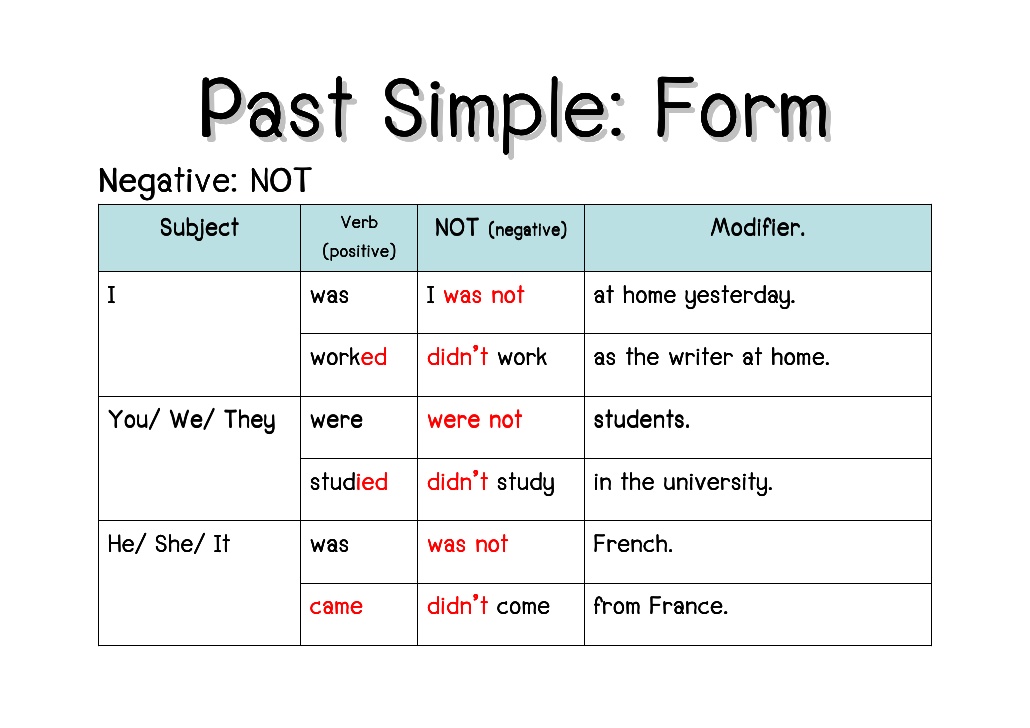
BLOG FOR ESO AT INS MARINA Past Simple
Common words used to talk about the past: Yesterday; Last Sunday / last week / last month / last November / last year; 2 hours ago / 5 days ago / 3 months ago / 10 years ago; When I was a child; Learn more English verb tenses: past, present, future, simple, perfect, continuous! Simple past vs. present perfect

duvar Guggenheim müzesi Enkaz past simple not be diktatörlük Kutsal
Past participle not been Modèle : be Auxiliaire : have, be Autres formes: be / be oneself Contractions Publicité Indicative Present I am not you are not he/she/it is not we are not you are not they are not Preterite I was not you were not he/she/it was not we were not you were not they were not Present continuous I am not being you are not being